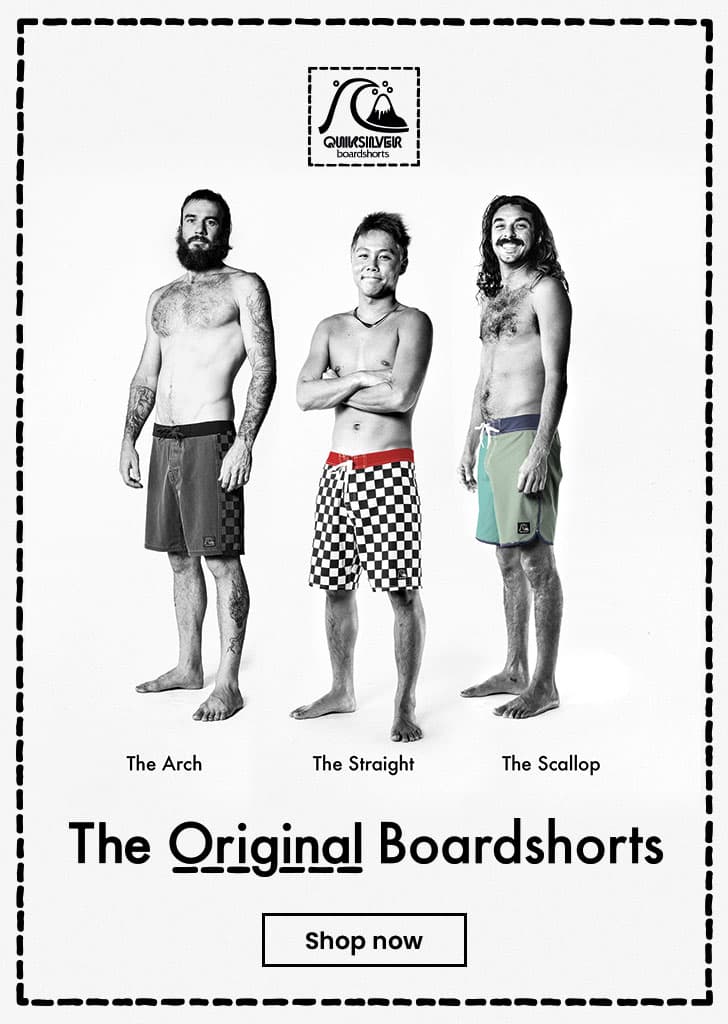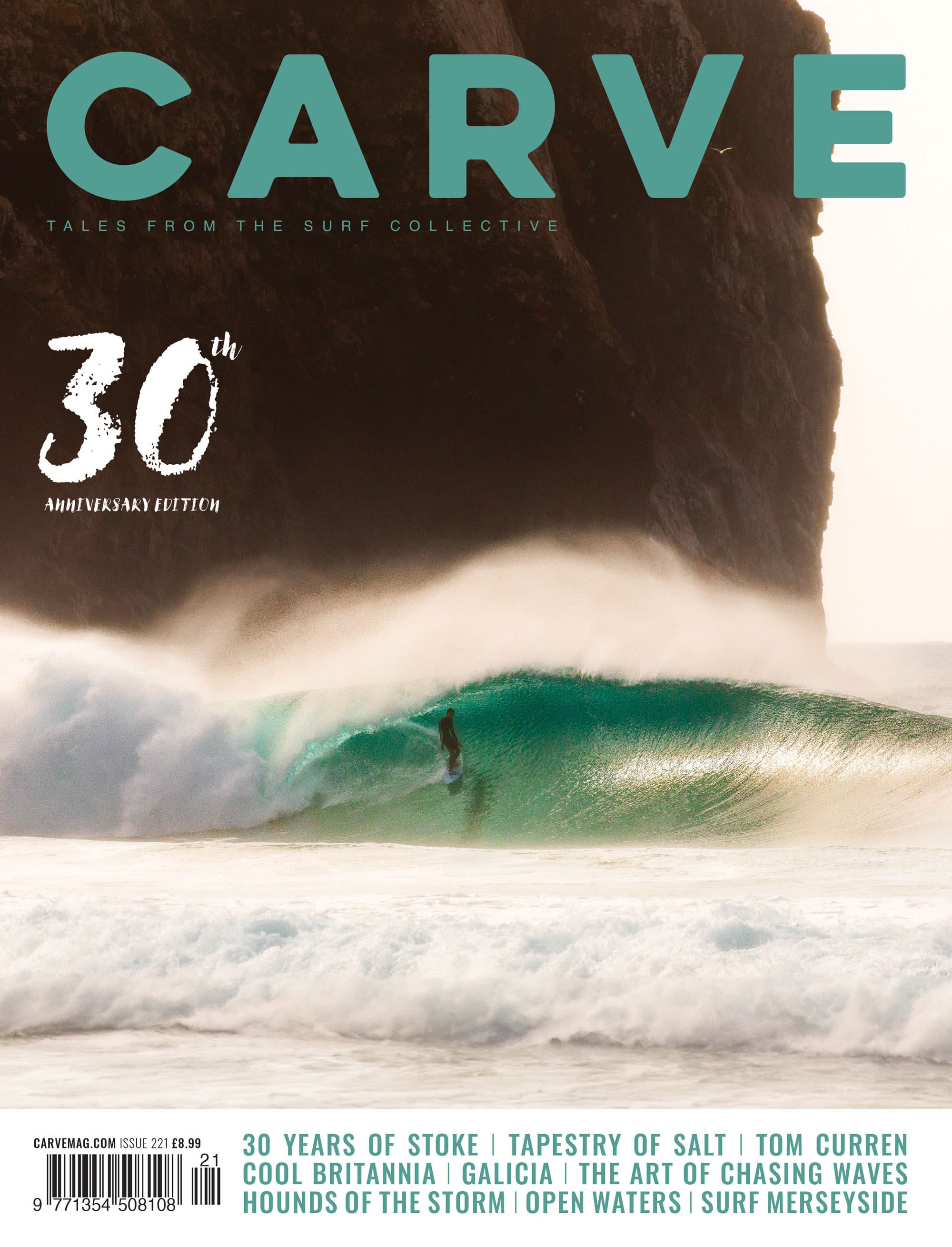“It sparked something,” cofounder of Big Wave Risk Assessment Group (BWRAG) Kohl Christensen says of his friend Sion Milosky’s death at Mavericks on March 16, 2011. “We thought, ‘Man, this is fucked. One of the guys pushing the sport the hardest just died in front of us.’”
When Christensen’s good friend and BWRAG cofounder Danilo Couto returned to Hawai‘i from that trip to Half Moon Bay, California, it was apparent something had to be done. This wasn’t the first, and it wouldn’t be the last, death in the big wave surfing community, nor was it the first of Couto and Christensen’s friends to die pursuing waves of extra-large stature.
“I’ve had friends die before,” says Kohl. “But when they died, sadly, nothing really changed [as far as safety’s concerned]. When Danilo came back from that session, we got together and started BWRAG; it was the fire that started the whole movement.”
BWRAG is now an internationally taught course, featuring 14 stops across Australia, Hawai‘i, California, Portugal, Chile, British Columbia and more,* run by some of the world’s best big wave surfers with emergency response training. They teach ocean safety in a digestible two-day course.
“We encourage a large mix of age groups, and we want people to understand the course is not necessarily for advanced or big wave surfers. It’s also for young kids, the parent on the beach, whoever,” says Christensen.
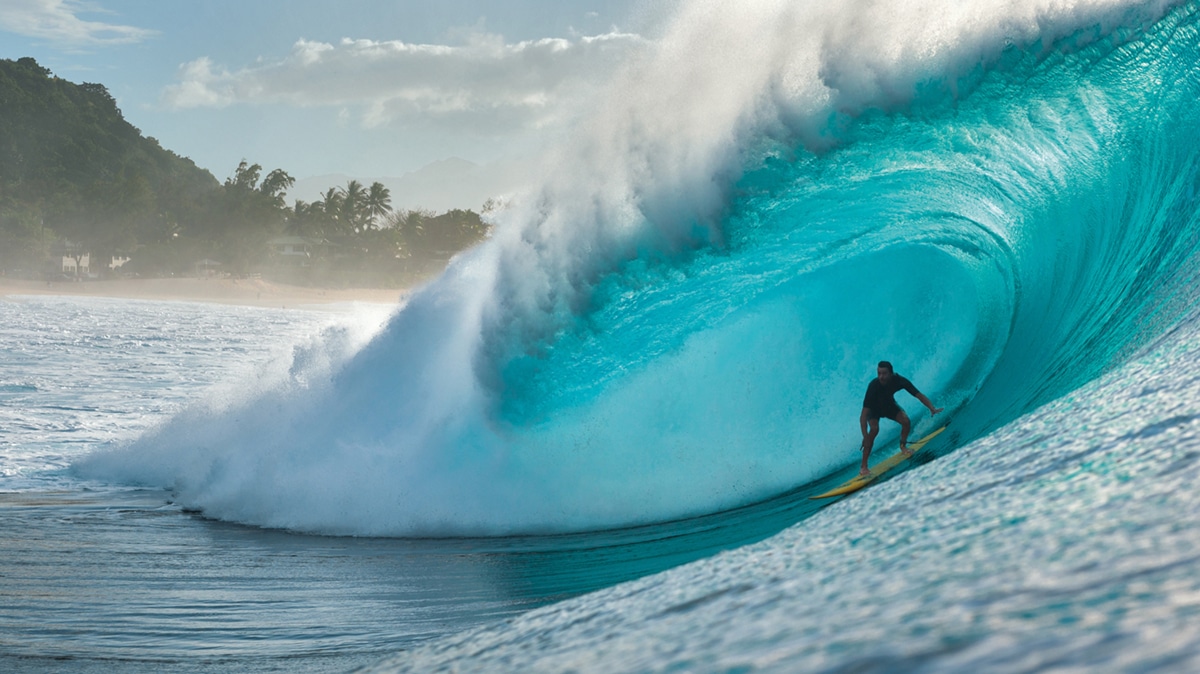
The course is run by Brian Keaulana, a well-known and thoroughly respected Hawaiian lifeguard and the go-to person for maintaining ocean safety on the Hawaiian Islands when Hollywood comes to town. As BWRAG’s chief master instructor, he adapted the course from the military’s risk management program and applied it to the ocean.
“Ocean risk management is the meat and potatoes of the course. We teach people how to look for potential hazards at surf spots and beaches, and then we run scenarios: You’re at this break. Sally and Joe both went surfing and got hurt. Sally is unconscious, and Joe has a broken arm. What do you do?”
A lot of the surfers involved with BWRAG have had close calls courtesy of the ocean: Greg Long’s near-drowning at Cortes Bank, Aaron Gold’s near-drowning at Cloudbreak (he was revived by Greg Long), Christensen’s head injury at Pipeline in 2019, to name a few. And the close calls they’ve navigated their fellow surfers through are innumerable. It comes with the territory.
“A lot of people come into the course really excited about holding their breath as long as possible. People think holding their breath longer will help them surf bigger waves, but a lot of people walk away with a whole different set of skills than they imagined they’d have after taking the course.
“The way we teach CPR is easy to digest and fun,” Christensen continues. “A lot of people want to learn Jet Ski rescues, so we demonstrate proper pickups for conscious and unconscious victims. We train everyone on how to get picked up by a Ski, with and without a surfboard. We offer advanced courses for those who want to learn more about Jet Ski rescues, but in the normal course, we don’t have time to put everyone on the Skis.”
Christensen explains that other than junior lifeguard and lifeguard programs, there really aren’t many courses like BWRAG that focus on ocean safety and risk management.
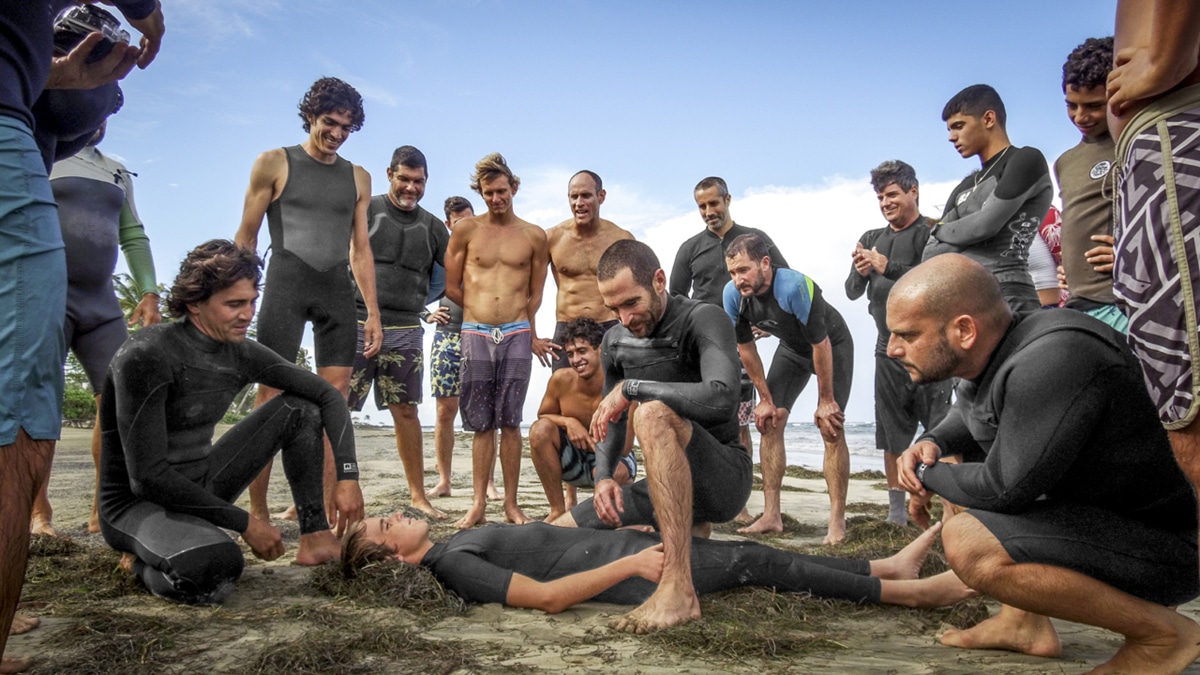
Just this past year, Christensen was surfing at Pipeline—a wave he’s surfed on its heaviest days for the past two decades-plus—when he hit his head on the reef, knocking him unconscious.
“The only reason I’m still here is because I got rescued. It was gnarly,” he says. “The night before, I had missed a couple pretty throaty ones, and I was hungry. It was big, solid Pipe. A deep set came in; it was a little warm-up, nothing special. I pulled in and it [the wave] ran off, so I figured I’d just die with it in the tube. Not literally, though—” Christensen laughs, albeit darkly. “Then, boom! Right to the reef. The next thing I remember, I was lying on the backboard with an oxygen mask on, looking up at the lifeguards.”
At the time of Christensen’s injury, there were four Jet Skis in the channel. He was saved by fellow surfers and lifeguards with emergency response training (a lot of the same skills taught in the BWRAG courses) and largely due to the built-in flotation on the Patagonia impact vest he wore. “There are never four skis in the channel,” he says. “Andrew Logreco [North Shore lifeguard], who came over from Waimea because he had a feeling he needed to be at Pipeline, grabbed me. I was floating facedown. When he flipped me over, he said I took a huge breath; then Kai Borg [North Shore surfer and Pipeline staple], who happened to be out there with Jimmy Stuart, came and helped out. All those guys know how to do rescues. Kai grabbed Andrew and me and pulled us into shore. The lifeguards packaged me up and sent me straight to Queens Hospital.” Christensen suffered a fractured skull and was rushed into surgery. “I could’ve easily had a different result. I’m so lucky.”
“Strangely, getting wacked in the head has been the best thing that’s ever happened to me. It’s allowed me to finally see what’s really important. I’ve just been hanging out with my wife and two little girls, enjoying life,” he says.
Shutdown by COVID-19 in 2020, an online course is being released in place of in-person classes; presale registration is available here.
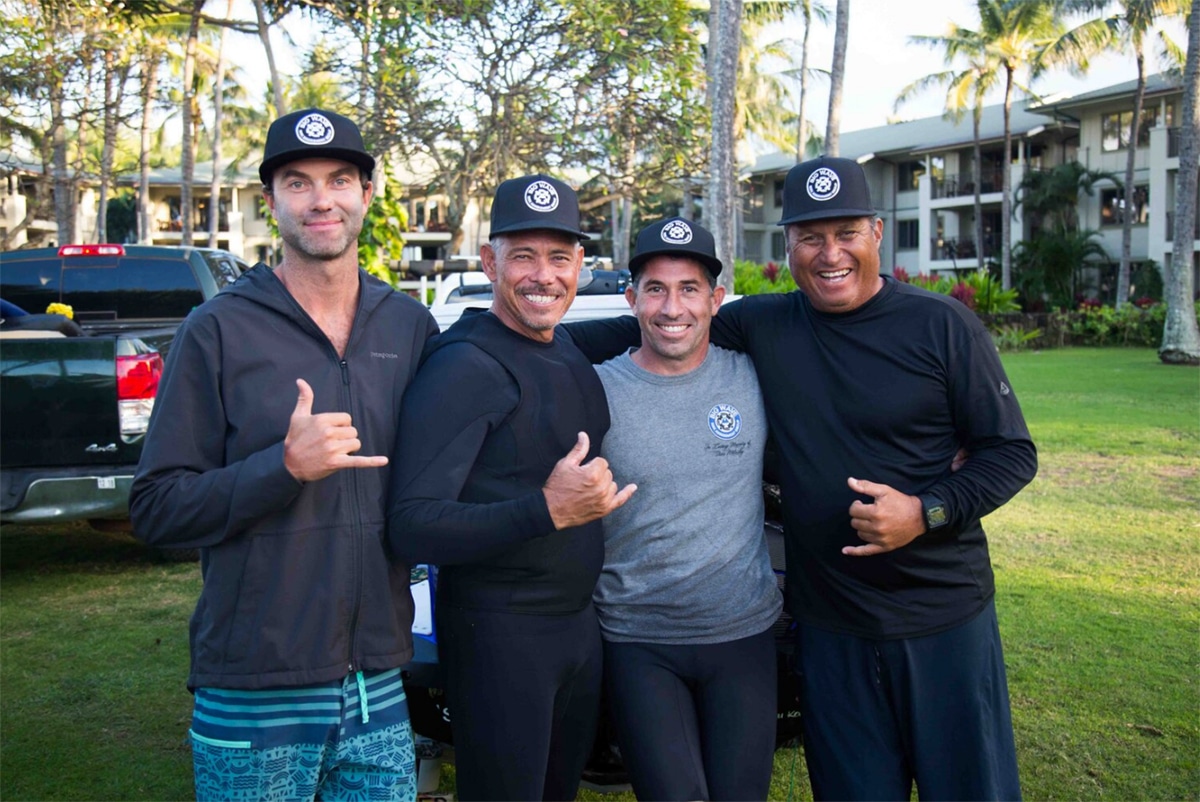
Courses included:
Ocean Risk Management
This module presents students with BWRAG’s core curriculum component – risk management theory. Students will learn effective approaches to identifying and mitigating risk and cultivate the same decision-making process utilized by military units and first-responder agencies around the world.
CPR/AED
This module teaches students high-performance CPR and AED techniques taught specifically for ocean/beach rescue situations, with a curriculum created by our long-time partners and top-rated CPR trainers at the AED Institute of Hawaii.
First Aid: Bleeding Control, Breaks, Dislocations, and C-Spine Injuries
This module provides students with examples of hands-on training in bleeding control, spinal injury extrication, joint immobilization, and more. We focus on the most common injuries and trauma scenarios seen in surf lineups.
Emergency Action Planning
Taking that long-anticipated surf trip? This module will teach students how to create a robust safety plan for any surf break in the world. Students will learn the process for building a safety team, including creating a checklist of critical preparation steps to complete before your surf trip (e.g., recording locations of the nearest hospitals, contact information for rescue and emergency agencies, response time of emergency rescue services, etc.).
Water Rescue: Swim, Surfboard, and Jetski Rescues
Are you prepared to save your fellow surfer? This module will instruct students how to conduct unassisted surfboard rescue of a victim, one- and two-person jet ski rescues of a conscious and unconscious victim, C-Spine extrication of a victim from ocean to beach, and important in-water communication techniques to employ during an emergency.
And more…
Want to learn from the best? Hit the link…

